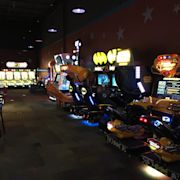Search results
Cast
Episode Guide
- 1. Pilot Dec 14, 2016
- Star, Simone and Alexandra journey to Atlanta, hoping to become music superstars.
- 2. The Devil You Know Jan 4, 2017
- Star, Alexandra and Simone work on a demo for a chance to perform at a music festival.
- 3. Next of Kin Jan 11, 2017
- Someone close to Carlotta is in danger, bringing out her protective nature.
The most prominent stars have been categorised into constellations and asterisms, and many of the brightest stars have proper names. Astronomers have assembled star catalogues that identify the known stars and provide standardized stellar designations. The observable universe contains an estimated 1022 to 1024 stars.
Stars are giant balls of hot gas – mostly hydrogen, with some helium and small amounts of other elements. Every star has its own life cycle, ranging from a few million to trillions of years, and its properties change as it ages.
Tonight's Sky in Chicago, Sep 9 – Sep 10, 2024. Fairly close to the Sun. Visible only before sunrise and/or after sunset. Mercury is just 17 degrees from the Sun in the sky, so it is difficult to see. Venus is close to the Sun and can only be seen shortly after sunset.
Find astronomy clubs near you in IL that feature feature meetings, viewing nights, star parties, and astronomy programs.
A resource to help you plan tonight's observation of astronomical events and Solar System objects visible from Chicago, United States.
Nov 15, 2021 · Stargazing Spots Within One Hour of Chicago. Photo credit: James Jordan via Flickr. Luckily, Chicago also has plenty of areas and state parks located far from urban areas. Below are some stunning spots to go stargazing in Chicago, where skies are dark, and the stars shine in all their splendor.
Feb 6, 2024 · The list of Chicago Michelin Star restaurants includes Alinea, Oriole, Kasama, Ever, Moody Tongue and more.
Jul 24, 2023 · In Illinois, it seems like the cosmos reach down to touch the prairie; sure, stargazing in the Chicago area isn’t optimal due to light pollution – but there’s a lot more to the Land of Lincoln than the Windy City!
1 day ago · Reyes attributed her enjoyment on set to her co-star Olson sharing a good laugh with her. "She's such a funny person," she added. "That's the kind of job that you want where you're just like ...
It gathers over 7,000 times more light than the unaided human eye, allowing you to see celestial objects that are trillions of miles away. And we think that’s pretty cool! Even in Chicago’s light polluted skies, we can spot planets, moons, stars, and more from the Doane Observatory.










